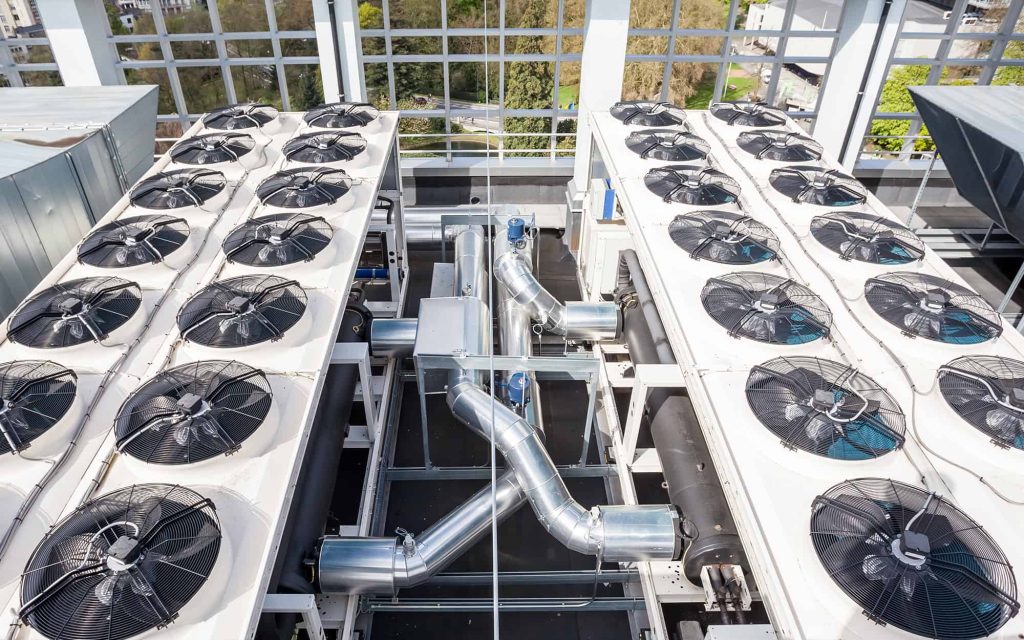In today’s competitive market, where every penny counts, businesses are constantly on the lookout for ways to minimize operational expenses. One area that often incurs significant costs is commercial cooling bills. The relentless operation of cooling systems to maintain comfortable indoor temperatures can lead to exorbitant energy bills, putting a strain on budgets. However, with careful planning and implementation of cost-saving measures, businesses can effectively reduce their commercial cooling costs, thereby improving their bottom line.
Efficient Cooling System Maintenance

Regular maintenance of cooling systems is crucial for ensuring optimal performance and efficiency. Neglecting maintenance can lead to decreased efficiency, increased energy consumption, and costly repairs. Therefore, businesses should schedule routine inspections and tune-ups for their cooling systems to identify and address any issues promptly. This includes cleaning or replacing filters regularly to prevent airflow blockages, which can reduce the system’s efficiency and increase energy consumption. Additionally, checking and maintaining refrigerant levels, inspecting ductwork for leaks, and lubricating moving parts are essential maintenance tasks that can help improve the efficiency and longevity of cooling systems.
Utilize Energy-Efficient Equipment
Investing in energy-efficient cooling equipment is one of the most effective ways to reduce commercial cooling costs. Modern cooling systems are designed to be more energy-efficient than their predecessors, thanks to advancements in technology and engineering. Businesses should consider upgrading to energy-efficient equipment with high SEER (Seasonal Energy Efficiency Ratio) ratings, which indicates the system’s efficiency in cooling mode. Options such as variable refrigerant flow (VRF) systems, which allow for precise control of refrigerant flow to different areas of a building, or evaporative cooling systems, which use water evaporation to cool air, can offer significant energy savings compared to traditional HVAC systems. While the upfront costs of energy-efficient equipment may be higher, the long-term savings in energy bills typically outweigh the initial investment.
Implement Smart Temperature Control
Utilizing smart temperature control systems can help businesses optimize their cooling operations and reduce energy consumption. Programmable thermostats allow users to set temperature schedules based on occupancy and usage patterns, ensuring that cooling is only active when needed. This eliminates the need for manual adjustments and helps prevent unnecessary cooling during non-business hours. Additionally, smart thermostats equipped with occupancy sensors can automatically adjust temperatures based on occupancy levels in different areas of a building, further optimizing energy usage. Implementing zoning systems, which divide a building into separate zones with independent temperature controls, can also help businesses tailor cooling settings to specific areas based on their cooling needs, further reducing energy waste.

Enhance Building Insulation
Improving building insulation is another effective way to reduce the workload on cooling systems and lower energy bills. Proper insulation helps minimize heat transfer through walls, ceilings, and floors, reducing the need for continuous cooling to maintain comfortable indoor temperatures. Businesses should seal air leaks and insulate windows, doors, and ductwork to prevent conditioned air from escaping and outside air from infiltrating indoor spaces. Additionally, installing reflective roof coatings can help reduce solar heat gain, particularly in hot climates, further reducing cooling loads and energy consumption.
Utilize Natural Ventilation
Where feasible, businesses should leverage natural ventilation as a complementary cooling strategy to reduce reliance on mechanical cooling systems. Natural ventilation utilizes outdoor air movement to cool indoor spaces, reducing the need for energy-intensive mechanical cooling. Installing operable windows, louvers, or vents allows businesses to take advantage of natural airflow and facilitate the exchange of indoor and outdoor air. Strategic placement of windows and vents, along with proper building orientation, can optimize natural ventilation effectiveness. Additionally, implementing ventilation strategies such as cross-ventilation and stack ventilation can further enhance airflow and indoor air quality while reducing the need for mechanical cooling.
Conduct Energy Audits
Regular energy audits are essential for identifying opportunities to improve energy efficiency and reduce cooling costs. Energy audits involve a comprehensive assessment of a building’s energy usage, identifying areas of inefficiency and opportunities for improvement. Businesses can conduct energy audits internally using in-house staff or hire third-party energy consultants to perform more detailed assessments. During an energy audit, various aspects of a building’s cooling systems, insulation, lighting, and appliances are evaluated to identify energy-saving opportunities. Based on the audit findings, businesses can implement targeted measures to optimize cooling system performance, reduce energy waste, and lower cooling costs.
Employee Education and Engagement

Engaging employees in energy-saving initiatives is critical for achieving long-term success in reducing commercial cooling costs. Employees play a significant role in energy conservation efforts and can contribute to cost savings through simple behavioral changes and practices. Providing employees with education and training on energy-saving practices, such as turning off lights and equipment when not in use, adjusting thermostats to recommended settings, and reporting any maintenance issues promptly, can help foster a culture of energy efficiency within the organization. Additionally, incentivizing and rewarding employees for their participation in energy-saving efforts can further encourage engagement and promote sustainability.
Conclusion
In conclusion, reducing commercial cooling costs requires a multifaceted approach that encompasses efficient equipment, strategic management, and employee involvement. By implementing the strategies outlined above, businesses can achieve significant savings in their cooling operations while maintaining comfortable indoor environments for occupants. However, it’s essential to recognize that achieving long-term sustainability and cost-effectiveness requires ongoing commitment and continuous improvement. By prioritizing energy efficiency, investing in modern technologies, and fostering a culture of conservation, businesses can not only reduce their environmental footprint but also realize substantial cost savings in the process.






GIPHY App Key not set. Please check settings